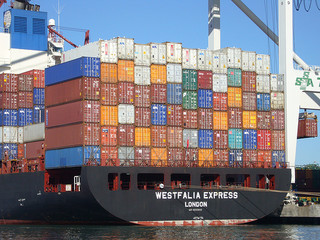 Increases in global freight tonnage will be “modest at best” for the second and third quarters of the year, the latest data from the Global Logistics Monitor of Transport Intelligence (Ti) suggest.
Increases in global freight tonnage will be “modest at best” for the second and third quarters of the year, the latest data from the Global Logistics Monitor of Transport Intelligence (Ti) suggest.
Expectations are not high for the next two quarters after the global economy emerged from first quarter in a precarious position as the Asian and U.S. economies slowed and an increasing number of European countries entered recession, a press release from Ti said.
Most ports ended the first quarter on a positive note, it added. Imports in particular picked up for many U.S. ports, while European ports struggled with low increases in containers, according to the Global Logistics Monitor. The monitor provides a monthly update of the global transportation and logistics market by drawing together the leading air, sea, road and rail indicators from around the world.
Asian ports noted good throughput in March after a slow start to the year due to the Chinese New Year. However, as capacity continues to be removed from the market, rates are on the increase in an attempt to recover from last year’s free fall.
Airfreight continues to struggle amid high oil prices and shifts to other modes of transport. Declines have been noted by Asian and European airline associations in March and February.
Airports are also noting declines in these two regions, while U.S. airports were a surprise in March, the monitor said. Some US airports such as Miami, Chicago, and Los Angeles all noted increases in cargo for the month of March; however, this increase may be due to the launch of new electronic products from Apple and Samsung and may not carry over into April.
Moving into the second quarter, oil prices have declined but remain above $100 a barrel—this will continue to negatively affect the airfreight market, the monitor predicted. Also, capacity is entering the market as air cargo providers take possession of new fleet. “This along with declining yields will further exacerbate an already difficult situation,” Ti said.
Future demand for air and ocean freight will depend on such economic indicators as manufacturing activity, it added. Although weak, Asia noted some improvement in manufacturing activity, while the U.S. reported another surprising increase of 1 percent in April. Europe, however, already suffering from its economic woes, noted sharp declines.
As a result, any notable rise in freight demand will likely come from the U.S. or Asia, or both, predicted the monitor.
Photo: Jim Bahn




